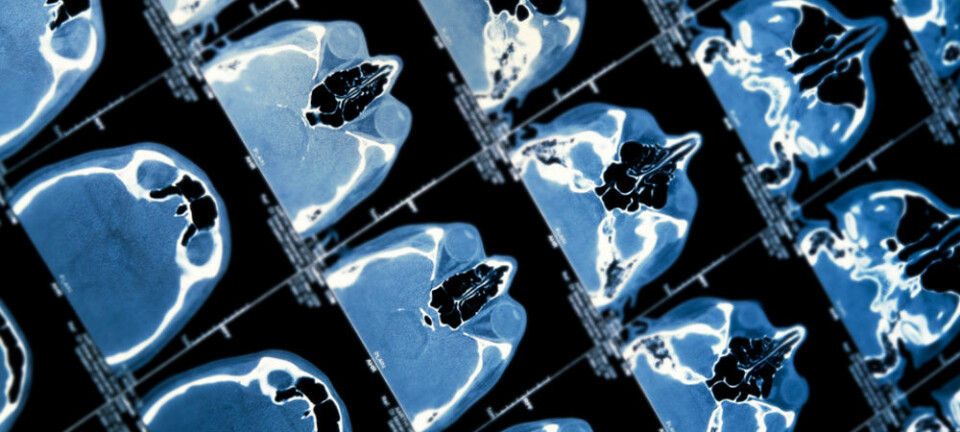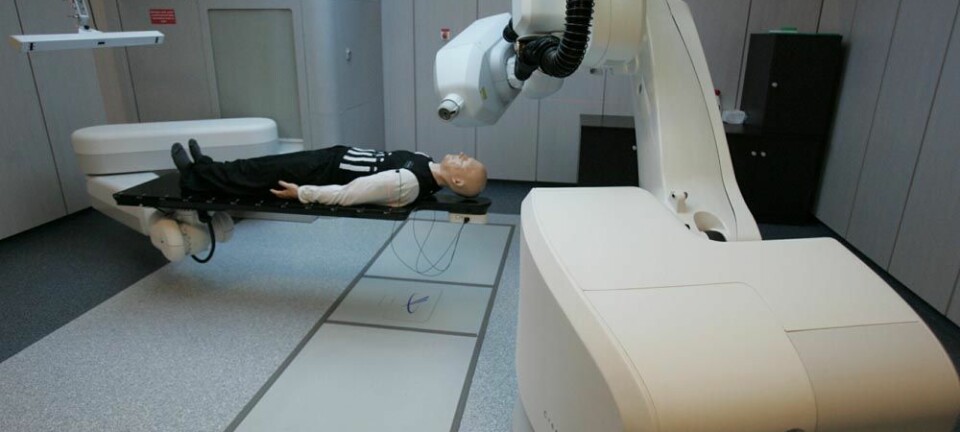An article from University of Oslo

More effective chemotherapy with focus on tissue
The tissue surrounding a malignant cancer tumour is probably more important than we had believed in a chemotherapy context.
Denne artikkelen er over ti år gammel og kan inneholde utdatert informasjon.
How can chemotherapy drugs be made more effective in treating cancer? Part of the answer can be found in the tissue surrounding a tumour.
PhD student Hanne Arenberg Askautrud and Professor Eirik Frengen, both employed at the Department of Medical Genetics at the University of Oslo and Oslo University Hospital, have studied, together with American researchers, how the responses of cancer cells to chemotherapy can be improved.
The researchers have studied mice that have been injected with doxorubicin, a type of chemotherapy drug often used in treating breast cancer in women.
And the conclusion is clear - the more leaky the blood vessels are, the more the chemotherapy drugs consequently reach the areas around a tumour, and the more effective the treatment becomes.
At the same time, it turns out that the stage of a tumour influences the effectiveness of the drugs. The responses to such treatments are related to the ability of the blood vessels to transport chemotherapy drugs to the cancer cells in a tumour. This ability is greatest during the intermediate stage of the progression of a cancer.
An important interaction
The researchers have studied how cancer cells interact with tissue surrounding a tumour.
"A tumour can be viewed as an organ containing many different types of cells, not just cancer cells. For example, it contains cells that form blood vessels and cells in the immune system. In order to better understand how everything works together, we need to look at the entire set of interactions ," explains Askautrud.
The classic concept is that chemotherapy drugs kill cancer cells. Unfortunately, chemotherapy drugs are not as effective as we would like. Hence researchers are trying to find methods that could potentially enhance the ability of chemotherapy drugs to successfully fight tumours.
It is common practice to cultivate cancer cells artificially. When they are grown in isolation in glass vessels, with the researchers then adding the chemotherapy drugs, they are actually only studying the cancer cells.
Researchers are now looking at how chemotherapy drugs affect all parts of a cancerous tumour, not just the cancer cells themselves, because a tumour contains much more than just cancer cells.
Filmed tumours in mice
In the study, the researchers gave the chemotherapy drug doxorubicin to mice. With the use of an extremely advanced microscope, they filmed breast cancer tumours in the mice during chemotherapy in order to study the effects over time.
"We have taken pictures continuously from inside the tumours. We then made films from these to see how the cancer cells were affected by their surroundings. At the same time, we examined how tumours and surrounding tissue reacted to the chemotherapy drugs," says Askautrud.
Immune cells contribute
During these experiments, the researchers saw that the immune system was affected by the drug. An infiltration of immune cells to the tumour occurred. These affect how the drug works. Some immune cells give the drug a helping hand, whereas others trip it up.
So medicines that can promote certain immune cells and suppress others would probably contribute to improving the effectiveness of the treatment.
"This is the first step along the path. We know now that it is possible to improve the effect of chemotherapy drugs by influencing both blood vessels as well as the immune system. But we still do not know precisely how the mechanisms behind this work," concludes Askautrud.
------------------------
Read this article in Norwegian at forskning.no


































